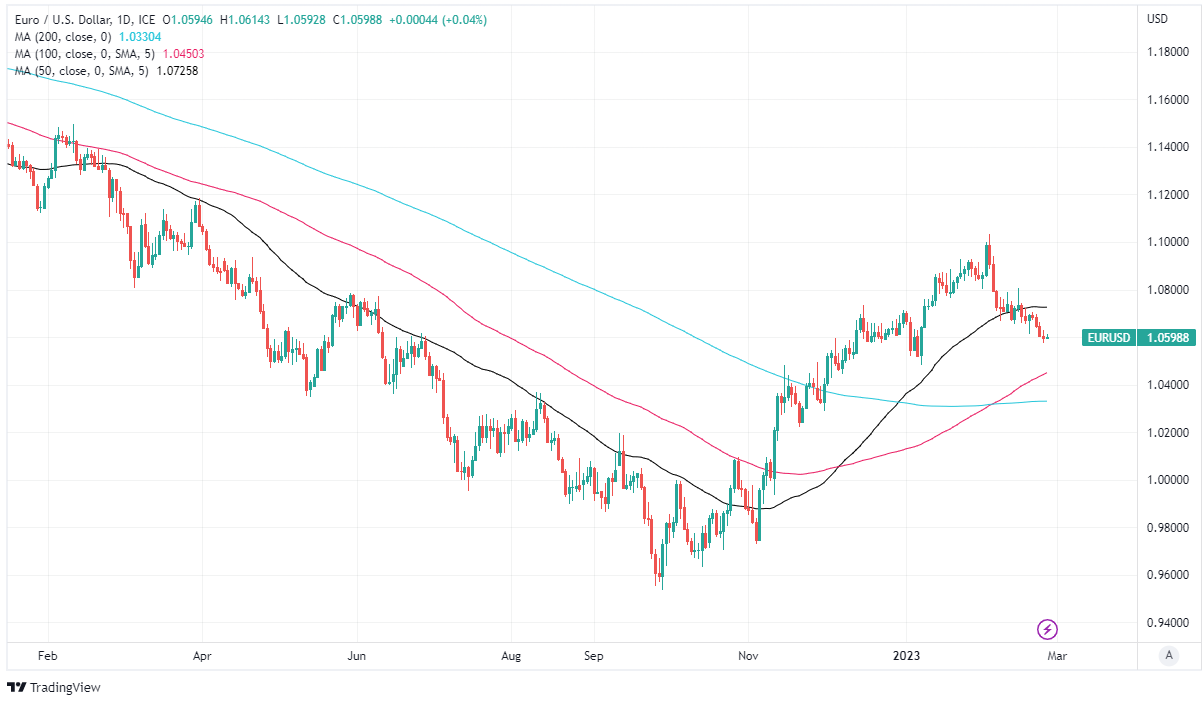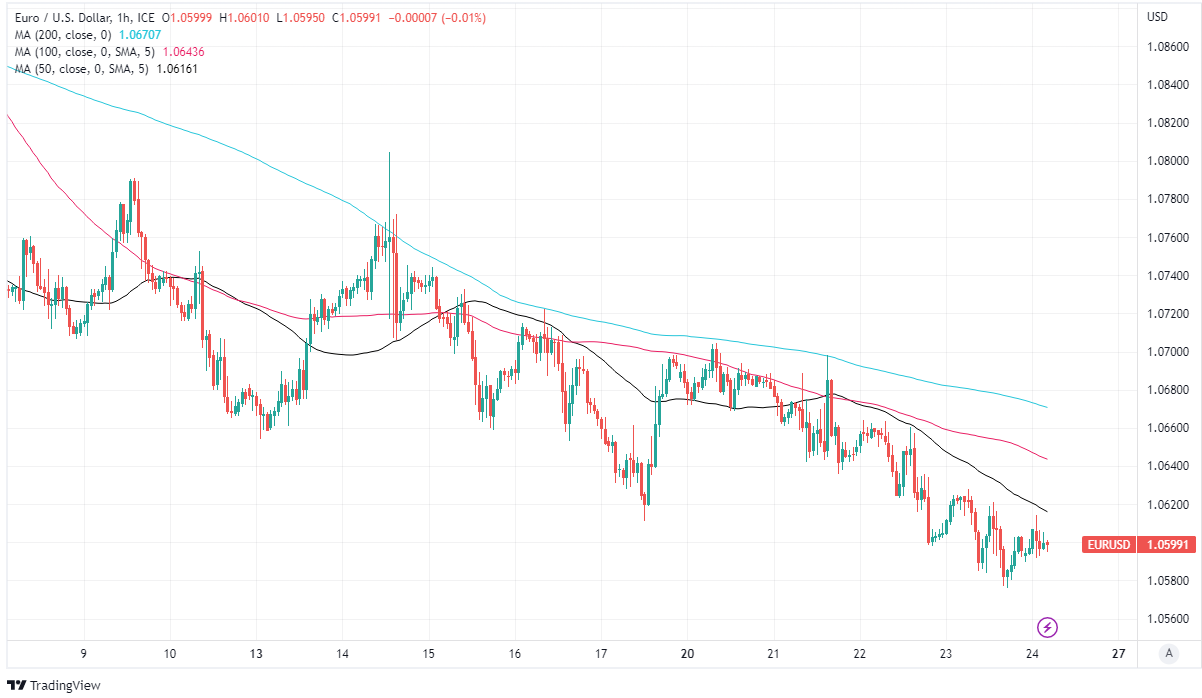Buy the EUR/USD Rate On Dips Below 1.06 Says Credit Suisse
- Written by: James Skinner
-
"We remain focused on trade location. We continue to look to buy EURUSD below 1.0600" - Credit Suisse.

Commerzbank HQ looms over the Frankfurt skyline. Image © Andre Douque, reproduced under CC licensing conditions
The Euro to Dollar exchange rate placed the single currency close to the bottom of the G10 bucket for the period in the final session of the week but would make for a worthwhile buy on any dips below the nearby 1.06 handle, according to strategists at Credit Suisse.
Europe's single currency was near the bottom of the pile on Friday for the day and week overall but it could have scope for a recovery back to the 1.0950 level in the near future if Credit Suisse strategists are on the money with their U.S. Dollar view for the period into month-end.
"In our Q1 views, we have strived to eschew a medium-term directional USD stance, as we anticipated tactical weakness early on followed by renewed strength later in the quarter. So far, we do not see a firm reason to change views," says Shahab Jalinoos, head of FX trading strategy at Credit Suisse.
"We remain focused on trade location. We continue to look to buy EURUSD below 1.0600, with a 1.0950 target and a 1.0500 stop loss," Jalinoos and colleagues write in a Wednesday market commentary.
Above: Euro to Dollar rate shown at hourly intervals with selected moving averages. Click image for closer inspection.
Dollar rates were higher almost across the board for the week on Friday but somewhat overlooked by the currency market was the stronger rebound in S&P Global PMI surveys out on Tuesday, where European economies and the continent appeared to fare better overall than those in the U.S.
Additionally, other surveys of the German economy have also perked up while European Central Bank (ECB) policymakers have continued to keep their options open in relation the outlook for Euro Area interest rates.
This comes against a backdrop in which financial markets have price-in as far as they can, about all the information they have so far been given by members of the Federal Open Market Committee at the Federal Reserve in the U.S.
"In the US, strong January retail sales and PPI data readings, on 15 and 16 Feb respectively, were instrumental in pushing the SOFR-implied terminal rate from 5.27% last week to around 5.32% at the time of writing. Hawkish comments on 16 Feb from Cleveland Fed President Mester and Atlanta Fed President Bullard, discussing the possibility of 50bp Fed hikes, provided additional fodder for the move," Jalinoos and colleagues say.
 Above: Euro to Dollar rate shown at daily intervals with selected moving averages. Click image for closer inspection. To optimise the timing of international payments you could consider setting a free FX rate alert here.
Above: Euro to Dollar rate shown at daily intervals with selected moving averages. Click image for closer inspection. To optimise the timing of international payments you could consider setting a free FX rate alert here.
"Yesterday’s much stronger than expected preliminary PMI data for the month of Feb, with services PMI gauges moving firmly into expansionary territory, paved the way for similar increases in respective market implied terminal rates, currently around 3.65% for the ECB and 4.57% for the BoE," they add.
Market-implied expectations for the Fed Funds rate have risen into the range telegraphed as likely by the mean average of projections from December's Federal Open Market Committee, which suggested borrowing costs could rise as high as 5.5% over the course of this year.
Meanwhile, European Central Bank policymakers have been reluctant and somewhat coy when asked about the likely destination of Eura Area borrowing costs, preferring instead to remain focused on the detail and implications of data emerging across from the bloc's economies.
"There is a risk that inflation proves to be more persistent than is currently priced by financial markets. As regards the terminal rate, we need to look at the incoming data to see how far we need to go," executive board member Isabel Schnabel told Bloomberg News just last Friday.












